Last Updated on November 12, 2024 by Team Ideas24
Here’s a special treat for you today. I recently came across this adorable DIY project which would make for some afternoon fun. This is so easy you won’t need superior sewing skills to make this. This is for strap-on dinosaur tails that are perfect for pretend play and as a Halloween costume.

Depending on the type of fabric that you choose to work with, girls and boys will surely enjoy these tails. My daughter wore it every day for one whole month. She could be a fairy or a princess, only with a dragon tail. Sometimes, she’d pair it up with a bright-colored tutu.
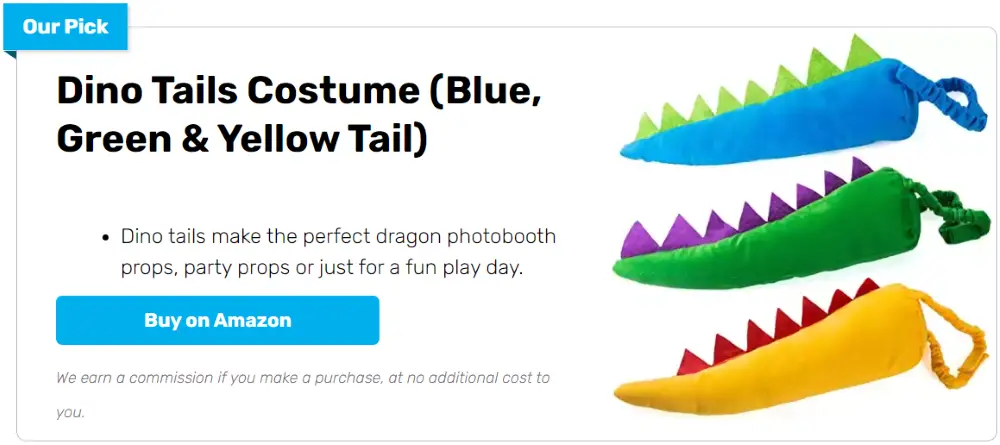
Contents [show]
DIY Dinosaur Tails: Bring Playtime to Life
Your kids will love this, that’s a guarantee. It stimulates creativity and imagination. They love swishing the tails back and forth or dragging them while walking around the neighborhood. They already asked me to make more for some of their friends.
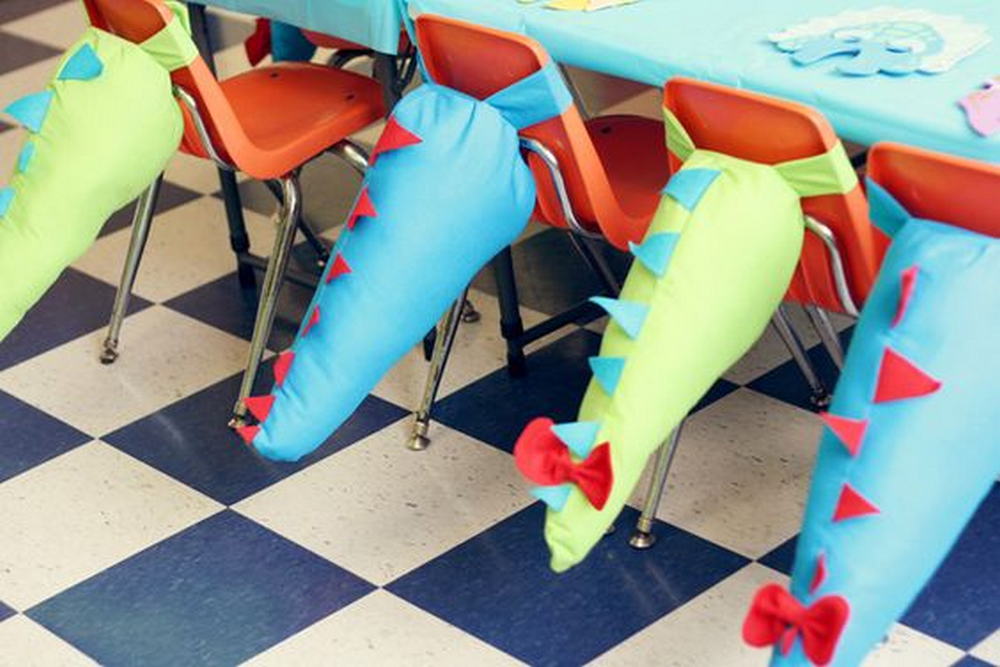
Crafting Dinosaur Tails
Get ready to bring some prehistoric fun to life! Crafting dinosaur tails is a simple and exciting DIY project that kids and adults alike will enjoy. Whether it’s for dress-up, a themed party, or just sparking imagination, these step-by-step instructions will help you create a tail that’s dino-mite! Let’s get started!
Materials
- 1/2 to 3/4 yard main fabric
- 1/4 yard spike fabric
- 5″ velcro
- Polyfil batting (small bag)
Tools
- Scissors
- Ruler
- Measuring tape
- Pencil
- Needle and Thread/Sewing Machine
- Pins
Instructions
Step 1: Design Your Tail
- Draw a dinosaur tail shape on paper to create your pattern. The size can vary, but a good starting point is about 22 inches long and 6 inches wide at the base, tapering to a point.
- Cut out your paper pattern.
Step 2: Cut the Fabric
- Fold your main fabric in half, place the pattern on top, and pin it in place.
- Use scissors to cut around the pattern, giving you two identical pieces for your tail.
- Repeat a similar process for the spikes, drawing and cutting out triangular shapes from your spike fabric.
Step 3: Sew the Spikes
- Place two spike pieces right sides together and sew along the two long sides, leaving the bottom open. Turn right side out.
- Repeat for all spikes.
- Fill each spike lightly with Polyfil batting to give it some structure.
Step 4: Attach Spikes to One Tail Piece
- Lay one piece of your tail fabric right side up.
- Pin the spikes along the ridge of the tail piece, pointing downwards, so they will stand up when the tail is turned right side out.
- Space the spikes evenly along the length of the tail.
Step 5: Sew the Tail
- Place the other tail piece on top of the spikes, right sides together, aligning the edges.
- Pin around the edges to secure the spikes and the top tail piece.
- Sew around the tail, leaving the base open for turning and stuffing. Leave a 1/2 inch seam allowance.
- Clip the seam allowance at the tail’s point to ensure a sharp tip when turned right side out.
Step 6: Turn and Stuff
- Turn the tail right side out, using a pencil or chopstick to push out the tip and spikes.
- Stuff the tail with Polyfil batting until it reaches your desired fullness.
Step 7: Close the Tail
- Fold in the edges of the open base and pin in place.
- Sew the base closed, either by hand or with a sewing machine.
Step 8: Attach Velcro
- Cut your Velcro into two pieces, one for each side of the tail base.
- Sew one piece of Velcro to the outside of the tail’s base and the other to the inside, ensuring they align to secure the tail around the waist.
Creative Play Ideas
Dinosaur tails aren’t just fun accessories for dress-up; they’re gateways to worlds of imagination and adventure. These handcrafted tails can bring to life the prehistoric world in your backyard, transforming an ordinary afternoon into an extraordinary adventure. Here are some creative play ideas to get the most out of it.
Dinosaur Parade
Gather friends and family, each donning their unique dinosaur tail, for a parade around the neighborhood or garden. Create a storyline for your parade, such as migrating to a new land or searching for food, and let the children lead the way with their roars and stomps. It’s a fantastic way to engage in physical activity while fostering social skills.
Dino Hide and Seek
Incorporate them into a game of hide and seek, where the seeker is the “predator” and the hiders are “herbivores” trying to avoid being caught. The lush tails add a fun challenge for the hiders to conceal, and the game can spark discussions about different dinosaur species and their survival strategies.
Prehistoric World Building
Use blocks, toy trees, and other materials to create a prehistoric landscape in your living room or backyard. Encourage children to use their dinosaur tails to role-play different scenarios in this world, such as escaping from a volcanic eruption, finding water sources, or laying eggs. This activity promotes creativity, storytelling, and an understanding of natural history.
Dinosaur Tail Tag
Transform the classic game of tag by making the ” it ” player wear a dinosaur tail, turning them into a fearsome predator chasing after the herbivores. When someone is tagged, they put on the tail and become the next predator. This variation adds a playful twist to the game, emphasizing agility and strategy.
Craft and Learn
Combine play with education by setting up a craft station where kids can create additional accessories for their dino tails, like claws or masks, while learning about the dinosaurs they’re inspired by. Incorporate books and resources about dinosaurs to enrich the experience, blending hands-on learning with imaginative play.
Storytime Quest
Create a story or select a book featuring dinosaurs for a read-aloud session. After the story, encourage children to reenact it using their dinosaur tails, or invent further adventures for the characters. This activity nurtures a love for reading and storytelling, bringing the tales to life.
By engaging in these creative play ideas with dinosaur tails, children can explore their imaginations, learn about history, and develop social and physical skills in a fun, interactive way.
Cute Kids Dinosaur Tails Design Ideas
Click on any image to start the lightbox display. Use your Esc key to close the lightbox.
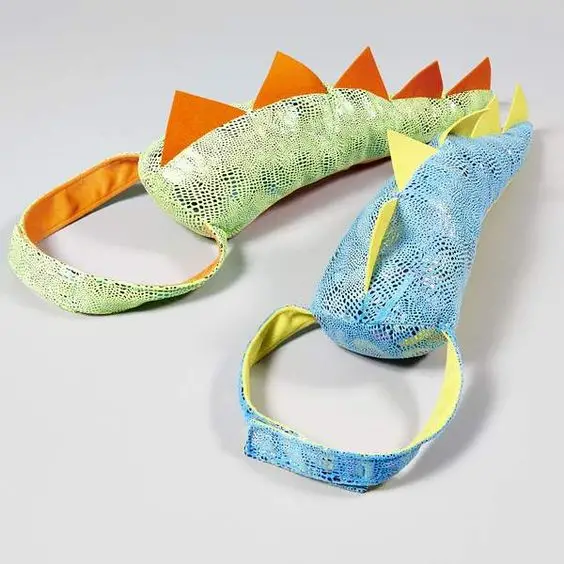
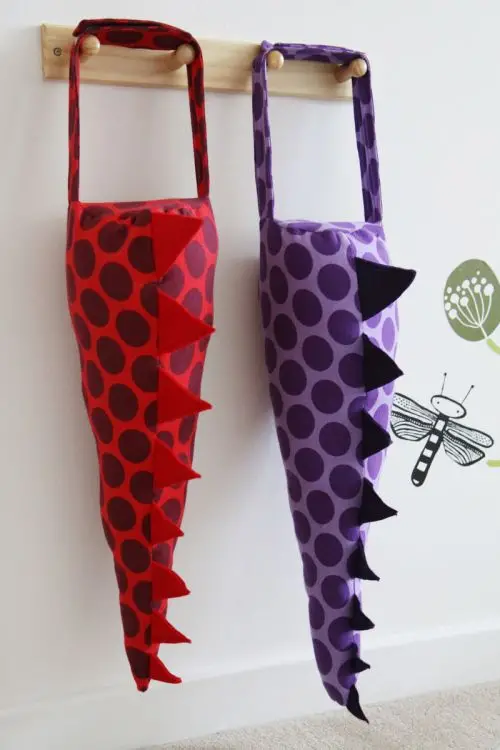
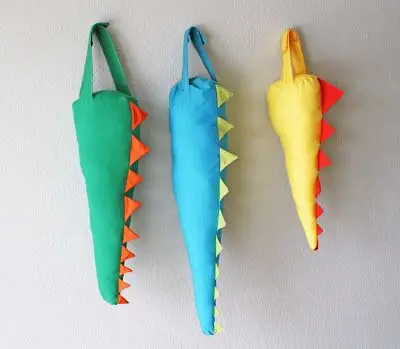


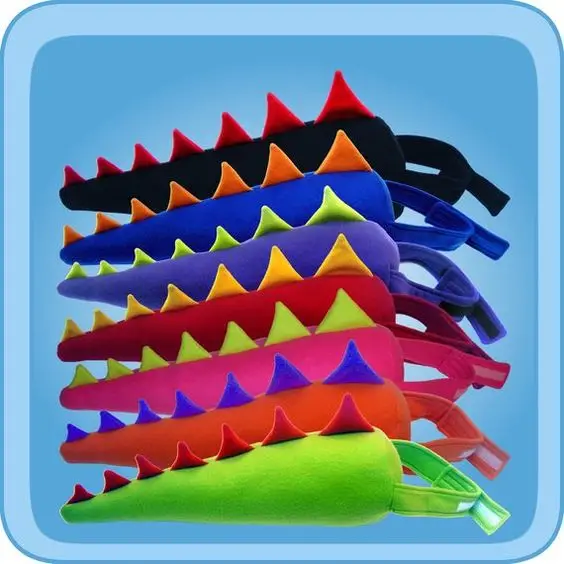
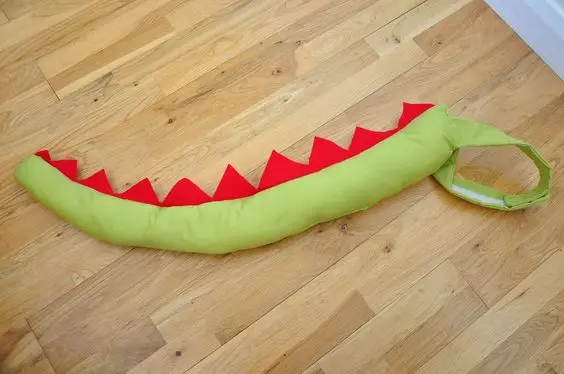
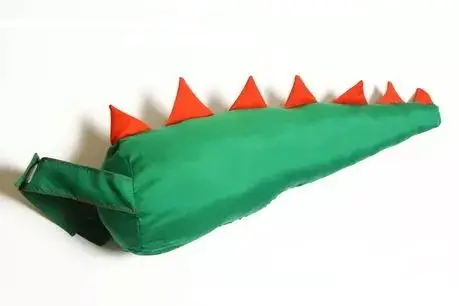
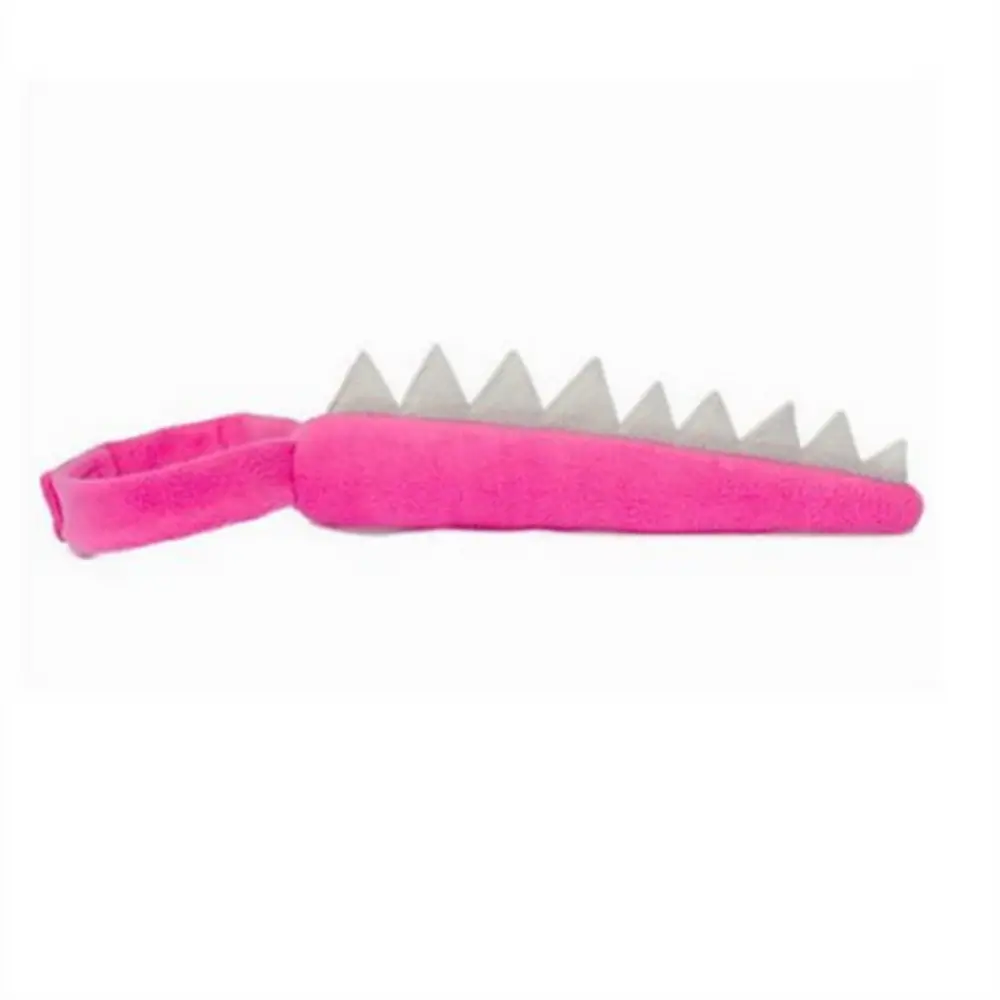
Learn how to sew kids’ dino tails through the video below.
Choosing the Right Fabric
Using the right fabric for your project is crucial for the final product’s appearance and durability. Different fabrics can offer various textures, colors, and levels of comfort, making your creation stand out and withstand the energetic playtimes it will surely encounter. Below, we explore how to select the perfect materials for your dinosaur tail adventure.
Comfort and Durability
When embarking on creating a dinosaur tail, selecting the main fabric is a pivotal decision that impacts the costume’s comfort and longevity. Choosing materials that are gentle against the skin yet possess the resilience to withstand the rigors of dynamic play is essential.
Cotton blends are an excellent choice, offering a soft, breathable texture ideal for sensitive skin. Fleece is another superb option, known for its warmth and softness, making it perfect for cooler climates or evening play. Canvas, with its tight weave, presents a more durable option, suitable for dinosaur tails that will explore the great outdoors and engage in vigorous adventures.
For the spikes, which add the defining dinosaur touch, felt is the go-to material. Its inherent stiffness ensures that the spikes maintain their shape and stand erect, providing that quintessential prehistoric look. Moreover, felt is easy to cut, sew, and attach to the main body of the tail, streamlining the crafting process. This combination of materials ensures that your project is comfortable to wear and durable enough to endure through many imaginative expeditions.
Texture and Color
The magic of a dinosaur tail not only lies in its shape but also in the choice of texture and color of the fabric. Opting for materials like corduroy or velvet for the main part of the tail can transform the costume into a sensory experience. Corduroy, with its ridged texture, and velvet, with its plush surface, add depth and luxury to the tail, making it a fascinating piece for tactile exploration.
Color plays an equally vital role in bringing them to life. Vibrant hues and dynamic patterns can captivate a child’s interest, igniting their imagination and transporting them to a world of prehistoric adventures. Whether it’s the lush greens of a jungle dweller or the bright colors of a fantastical creature, the choice of color can deeply influence the character and story behind each dino tail.
Introducing contrasting colors or patterns can serve as a visual highlight for the spikes, accentuating these distinctive features. Whether it’s neon colors against a muted base or patterned spikes on a solid-colored tail, these contrasts can enhance the visual appeal of the costume, making it stand out in a crowd of dinosaurs.
Safety and Washability
When crafting this project, especially for younger children, prioritizing safety and ease of care is paramount. The materials you select should captivate the imagination, guarantee the child’s well-being, and offer practical maintenance features. This dual focus ensures the tail remains a cherished and safe part of playtime, adventure after adventure.
The safety of the materials is the first and foremost consideration. Children are naturally inclined to explore their world through touch and, often, taste. Thus, selecting non-toxic, lead-free fabrics and dyes is critical to prevent any risk of harm.
This is particularly important for the dinosaur tail, which will likely undergo rigorous use in various environments. Look for certifications or labels that indicate the fabric’s compliance with safety standards, ensuring they are free from harmful chemicals that could pose health risks.
Beyond safety, the practical aspect of maintaining them should not be overlooked. Children’s play can often lead to spills, stains, and the need for regular cleaning to keep the tail looking its best. Therefore, opting for machine-washable fabrics is a wise choice. This consideration simplifies the cleaning process and ensures that your toy can be quickly returned to playtime, fresh and clean.
Fabrics that retain color and texture after multiple washes are ideal, as they help maintain the tail’s vibrant appearance and tactile appeal over time. Additionally, consider the fabric’s drying properties; quick-drying materials can be especially convenient, reducing the turnaround time from wash to wear.
Choosing washable and safe materials is also a balance to be struck with durability. The fabrics should withstand the wear and tear of play and the rigors of regular washing. High-quality materials that resist fraying, fading, and shrinking are essential to ensure the dinosaur tail remains a durable and hygienic companion for children’s adventures.
Eco-Friendly Options
Opting for eco-friendly materials is a thoughtful way to reduce environmental impact while crafting a playful and imaginative accessory for children.
Sustainable fabric options like organic cotton, bamboo, and recycled polyester are excellent for environmentally conscious crafters. Organic cotton is grown without harmful pesticides or synthetic fertilizers, making it a safer option for the environment and the child. Bamboo fabric is renowned for its softness and breathability, offering a comfortable fit for active play.
Its rapid growth and low water usage make bamboo a sustainable choice. Recycled polyester from post-consumer plastic bottles provides a durable and eco-friendly alternative to traditional polyester. It significantly reduces plastic waste and requires less energy in its production.
These materials contribute to the conservation of natural resources and ensure that the dinosaur tail is durable, comfortable, and safe for children to wear. By choosing eco-friendly fabrics, you’re crafting a playtime accessory that supports the planet and provides a soft, durable costume for children’s adventures.
Testing Fabric Compatibility
The compatibility of chosen fabrics is crucial in making these projects, particularly when combining different textures or weights for the main tail and the spikes. This step is essential for the final product’s aesthetic cohesion and functional durability. Testing how the main and spike fabrics interact is vital for several reasons.
Firstly, it verifies that the spike material can be securely attached to the main fabric, preventing detachment during play. Secondly, it ensures that the colors and textures of the fabrics complement each other, enhancing the overall visual appeal of the dino tail.
To test fabric compatibility, consider making a small prototype or conducting a patch test by sewing a few spikes onto a scrap piece of the main fabric. This allows you to assess the ease of sewing, the attachment’s strength, and the combined fabrics’ visual effects. Adjustments can be made based on these tests, ensuring that the final project is visually appealing, structurally sound, and capable of withstanding the adventures it will embark on.
By thoughtfully selecting your fabrics, you can create a dinosaur tail that is visually stunning, comfortable to wear, and durable enough to support countless adventures.
Care and Maintenance
Ensuring dinosaur tails’ longevity and continued appeal requires proper care and maintenance. These playful accessories can become cherished parts of a child’s imaginative play, so keeping them in good condition is important. Below, we outline essential care and maintenance tips to help your toy stay vibrant, clean, and ready for adventure.
Regular Cleaning
Given their frequent use in various environments, dinosaur tails are prone to getting dirty. To maintain their appearance and hygiene, regular cleaning is essential. Most of these tails made from machine-washable fabrics can be cleaned easily in your washing machine.
Use a gentle cycle with cold water and mild detergent to prevent damage. Hand washing might be better for dinosaur tail made from more delicate materials to preserve the fabric’s integrity and color. Always refer to the care instructions specific to the materials you used to ensure proper cleaning.
Spot Cleaning
Spot cleaning can effectively and quickly solve small stains or spots. Use a damp cloth and a small amount of mild detergent to clean the affected area gently. This method is particularly useful for removing minor stains without having to wash the entire tail, saving time and reducing wear on the fabric.
Drying
After washing, air drying is the best option for these projects. Avoid using high heat in a tumble dryer as it can shrink or damage the fabric. Instead, lay the tail flat or hang it up to dry naturally. If you must use a dryer, select a low heat setting and remove the tail while it’s still slightly damp to prevent over-drying.
Storage
Proper storage is key to maintaining the shape and quality of these toys. Store them in a cool, dry place away from direct sunlight, which can fade colors over time. If space allows, hang them up or lay them flat in a drawer. Avoid folding or crumpling the dinosaur tails, as this can cause creases and damage the fabric or batting over time.
Repairing Damage
Despite careful maintenance, dinosaur tails may eventually show wear and tear. Promptly repairing any rips or loose spikes can extend their life. Basic sewing skills are usually sufficient for most repairs, and addressing issues early can prevent further damage.
Following these care and maintenance tips ensures your dino tails remain a vibrant and durable part of your child’s imaginative play. Regular cleaning, proper drying, and attentive storage all contribute to the longevity of these playful accessories, making them beloved companions for many adventures to come.
Conclusion
Crafting dinosaur tails offers a wonderful blend of creativity, learning, and fun, engaging children in imaginative play while providing a hands-on crafting experience. These delightful play accessories encourage exploration of the natural world through the lens of prehistoric creatures, fostering a love for history and science. With the right materials, a bit of sewing, and a splash of color, anyone can create a unique dino tail that sparks joy and adventure in a child’s life.




















